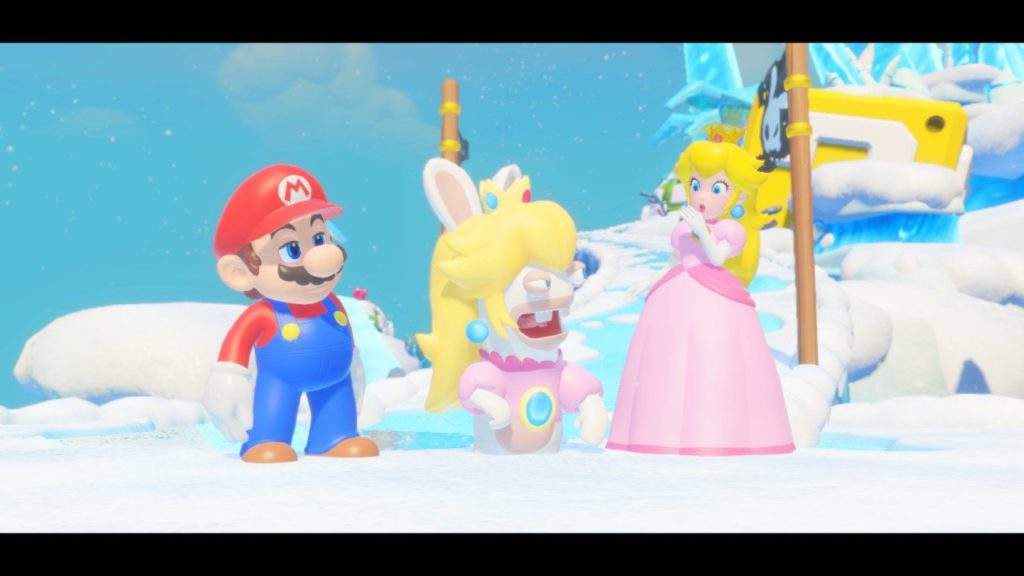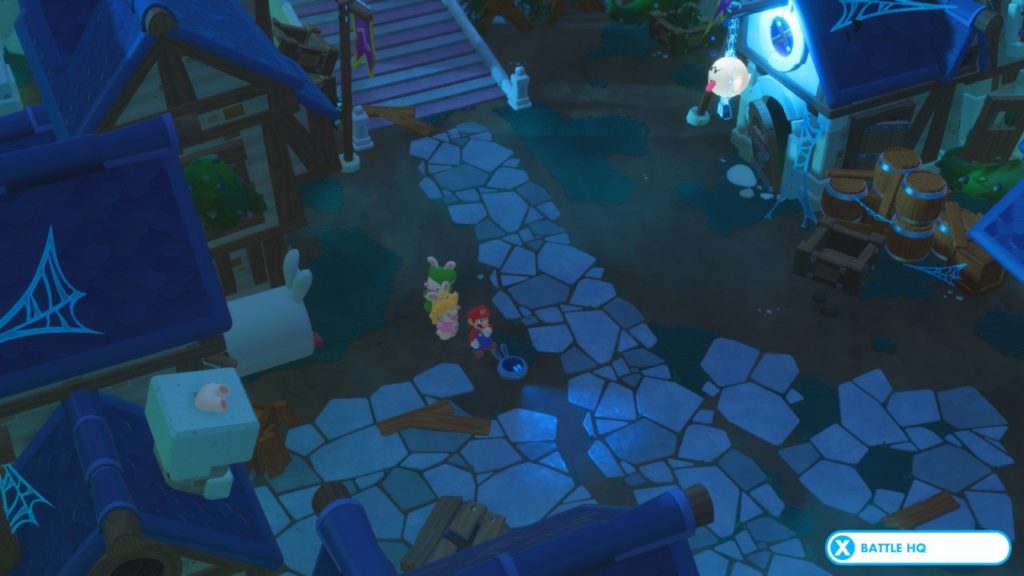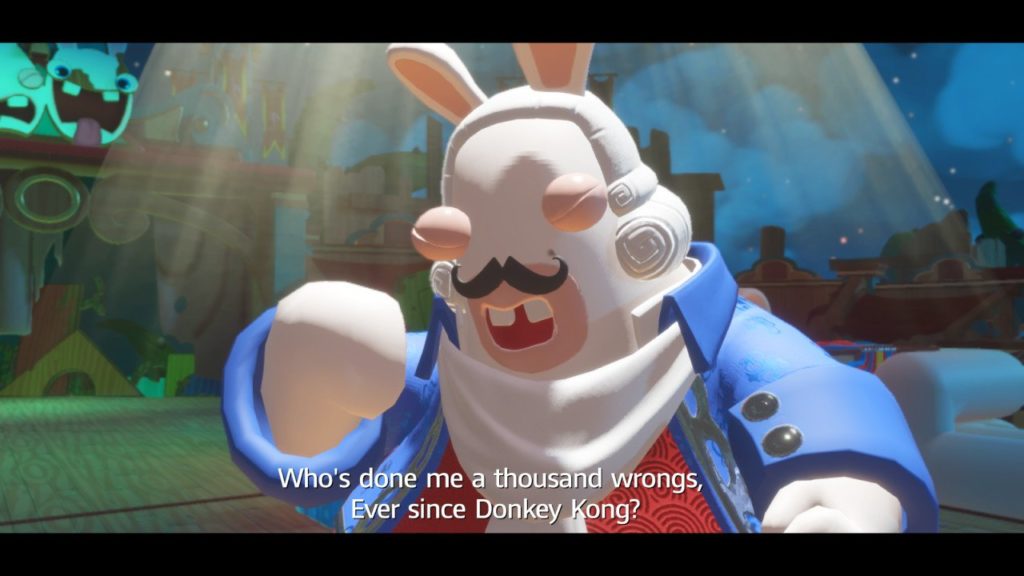- Genre: 3D Platformer
- Platform: Switch
TL;DR
- Another great entry in the Super Mario series, with great platforming mechanics, a predictable but fun story, and great world locations to explore
- Collectathon-style worlds didn’t work as well for me as the more focused Mario 64/Sunshine style individual stars, but the story moons in particular were great
- New core mechanic of taking over enemies and using their abilities was a great focus for the design, and works fantastically
- Theme song of the year – go buy it on iTunes or Google Play Music
I’ll be perfectly honest from the start here; I still think Super Mario 64 and Super Mario Sunshine are better games. While Super Mario Odyssey is definitely a fantastic game on its own, the change to the star collecting mechanic into something more akin to Banjo-Kazooie often felt weird to me with a strange mix of really good focused moons alongside completely incidental ones that you can find in things like piles of leaves. That said, once I get beyond that change the rest of the game was fantastic and is as good as any Mario game we’ve seen before.
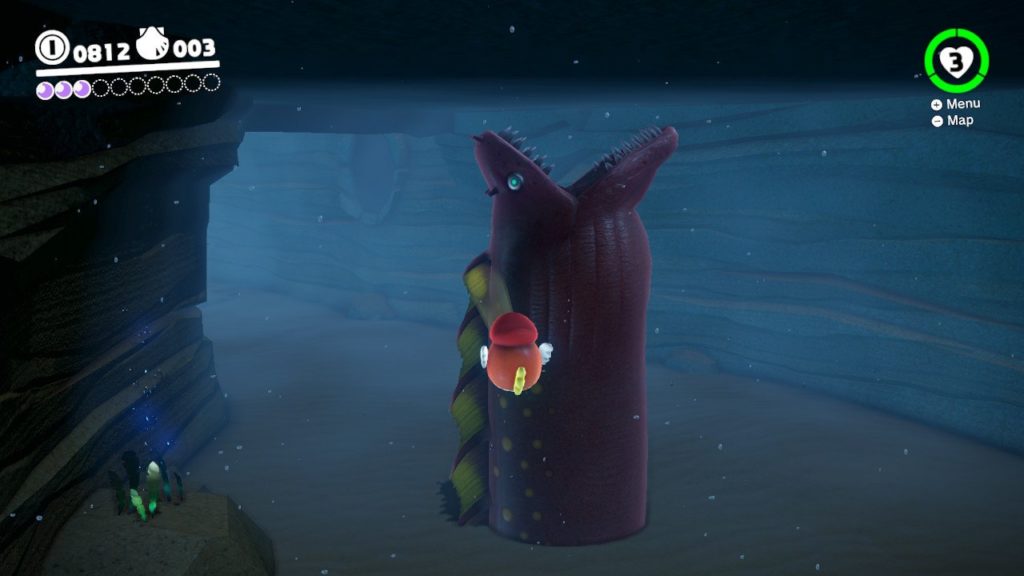
Since it is the core difference in the game, let’s start with the takeover. For various story reasons, your hat is now alive and can bind Mario to the soul of his enemies, or something to that effect. The end result is that you can now become your enemy. Take over a Goomba, and you can now build stacks of goombas and stop sliding around on ice. Take over a Cheep Cheep and you can now swim under water without needing to breathe. Hell, take over a T-Rex and stomp the shit out of everything around you just for laughs. This even extends to seemingly mundane things like the little traffic cones in the city that you can use to catapult Mario around.
This new core ability and the set of enemy mechanics that come out of it are used to great effect. A large portion of the boss fights use specific environment and enemy combos to change things from just being your standard 3 butt stomp affairs. Almost any puzzle solving segment will involve finding the nearby enemy type to use their skill set. Even just for changing up gameplay a bit, it’s nice to be able to warp into an enemy and use a completely different set of skills than Mario on his own can do. There’s even a surprise at the end that leads to one of the most bombastic finishes to a Mario game that I can remember.
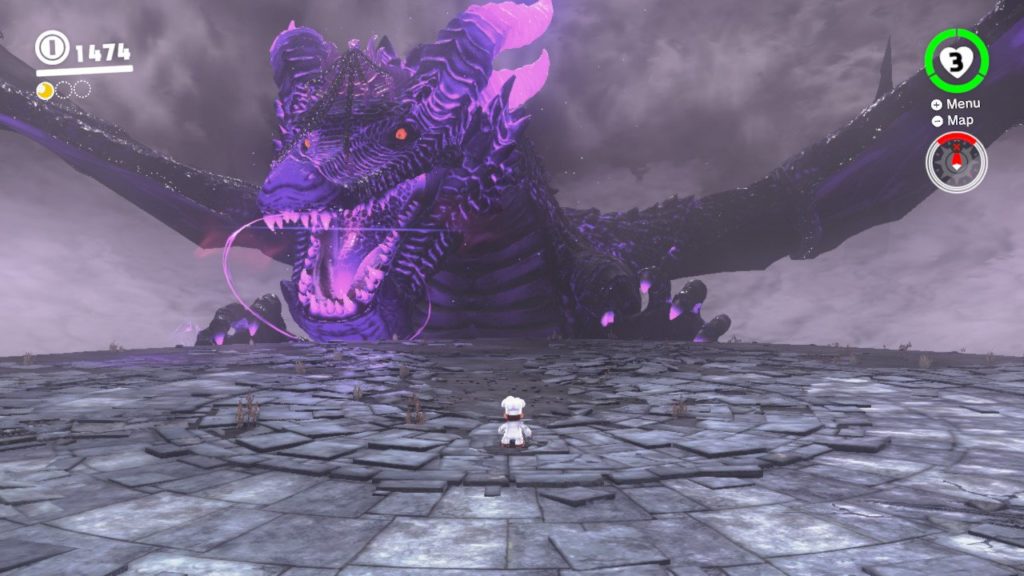
On the boss front, there really was a much wider variety than normal. There’s a recurring set of bosses that act as this game’s substitute for the Koopa kids, and they’re the normal 3 hit to kill with minor mechanical changes. However, there’s definitely a few much larger bosses in place. For example, the New Donk City segment has a large centipede boss that can warp in and out of buildings, and the only way to defeat it is to hat-possess a tank and shoot its weak points. A later fight pictured above has a very non-Mario dragon boss that ends up being more about attack avoidance than offense, with distinct cooldown segments where Mario can land his damage.
The end result of all this is that both by sheer quantity, as well as mechanic variety, this is the widest set of boss fights that Mario has ever seen, and the game’s pacing greatly benefited from it. At a typical rate, I was seeing a boss every 30-45 minutes, giving me a nice set of pseudo-open world collecting, followed by a high intensity battle. The consistency of this pace and the mechanical variety allowed for the game to pump up the action when needed to avoid the slow pace trap that other heavy collection platformers have fallen to.
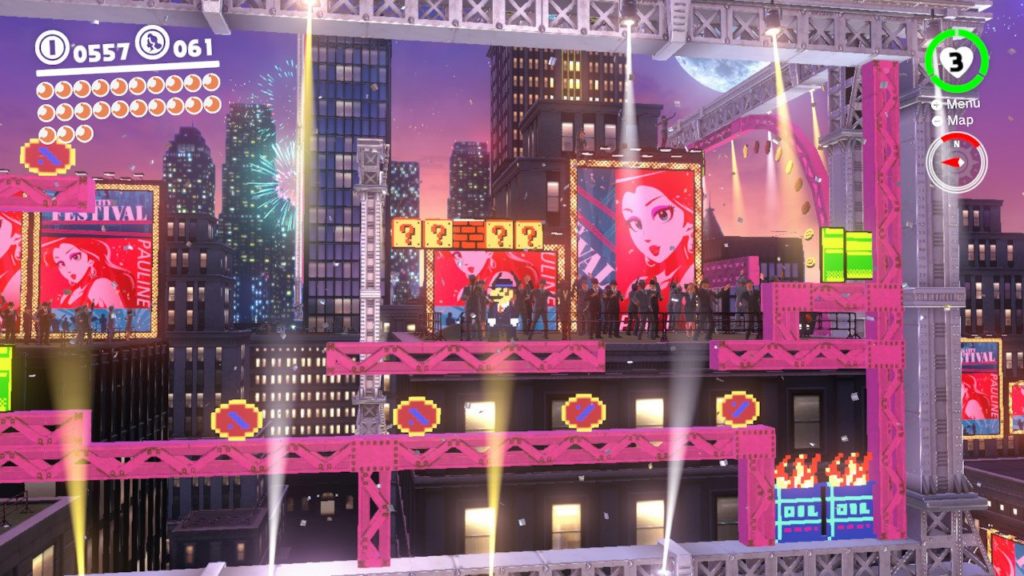
However, it was that collection aspect that ended up being the strong low point for me in an otherwise fantastic game. The amount of collection just didn’t make sense, and often times felt like fluff to me. In a typical world, you’d have 3-5 moons that were mandatory per-story, then the need to collect an additional 15-20 just to power up the ship and leave for the next kingdom. Out of those, I’d estimate about half were purely incidental; a glowing stump may be a hint at a hidden moon, a music note starts a 10 second run to collect all notes, or hell, just a moon floating out in the open that you have to climb a tree to collect. Among the ones that required a bit more effort, you’d typically see a segment similar to a simplified hidden shines in Super Mario Sunshine, where some quick platforming or single-mechanic enemy would grab you a guaranteed obvious shine and loosely hidden shine. While there were certainly a lot of shines to get, it often didn’t really feel like there was much point to a lot of them, and I’d have rather seen a larger focus on expanding the story or hidden-area shines into something more meaningful.
There’s definitely a few other minor things there that didn’t really hit. The motion controls in particular are pretty terrible, but purely optional. On the hardware front, I’d recommend playing with a Pro Controller over the Joycons, as I had far too many deaths caused by the signal loss that is effecting them. Some weird mechanical bugs, such as an unintended quick pivot when using fire flower boosts also killed me too many times in some tight movement areas. However, they’re not really the types of things that kill enjoyment of the game, at least beyond some grumbling at the time problems came up.
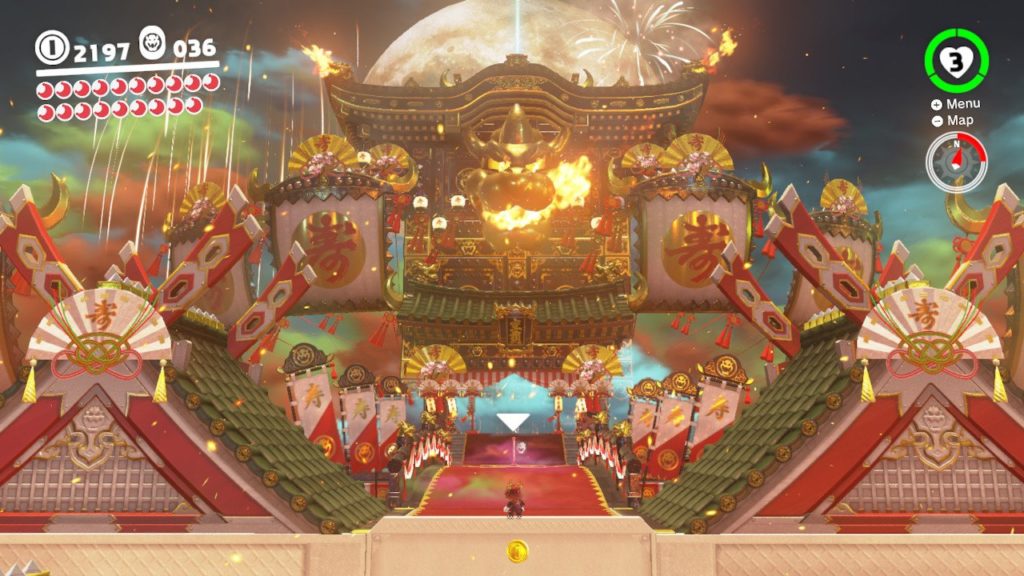
That said, while the collectathon may prevent me from ever doing a 100% run, it certainly didn’t stop me from really enjoying the hell out of what I did play. End of the day, the core mechanics of the game are just too good to miss out on. The platforming is as fun as it’s ever been and for the moons that push for depth, it’s more important than ever to be on top of my game. Even just the act of running around the worlds to get to the next objective is fun to do due to the much larger inclusion of vertical elements and enemies to takeover to traverse them. While it may not hold up to me like 64 or Sunshine, this is still a game worth getting a console for, and that right there says a lot about the quality that’s in place.




